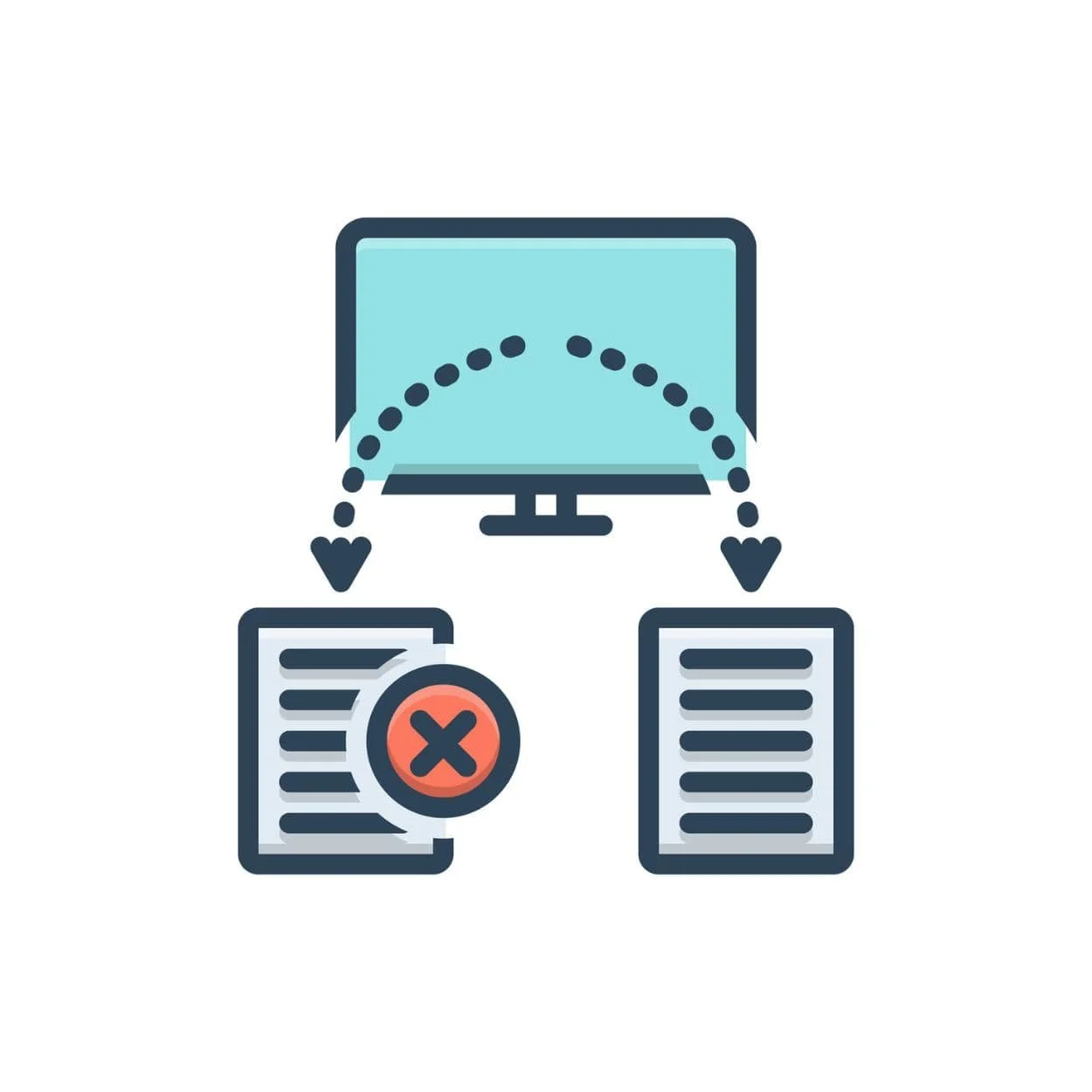When you operate an ecommerce site, offering various payment options at checkout can improve customer experience, but not all options are ethically sound. “Buy Now, Pay Later” (BNPL) is a controversial option that has witnessed a surge in popularity. The platforms that profit from BNPL promise more sales for retailers and convenience for customers, but there is more to the story.
Should small business merchants offer Squarespace’s Afterpay or Klarna options or Shopify Affirm loans to customers? Not if you care about business ethics or social responsibility.
Squarespace Afterpay & Klarna
Somehow we managed to make it to 2023 with the BNPL trend barely registering on our radar. But when gathering insights on Squarespace payment options, a remark from Squarespace’s Chief Product Officer stood out: “Afterpay has been a top requested feature from our customers.” And in 2024, the platform added Klarna as another “buy now, pay later” option.
Given this widespread appeal of BNPL, it was surprising that our clients never asked about Afterpay or Klarna. The discrepancy is likely due to the fact that our B2B clients generally use ecommerce to support core services or as a secondary retail aspect, rather than having a primary focus on selling D2C or B2C consumer goods.
What is Buy Now, Pay Later?
A Buy Now, Pay Later payment plan allows customers to purchase immediately and defer payment, typically split into four interest-free installments.
BNPL, sometimes called a point-of-sale loan, promises shoppers the joy of getting what they want immediately and worrying about the costs later, but it holds an irony that’s hard to ignore:
Buy Now urges uneducated or impulsive shoppers to give in to their desires instantly, bypassing the usual consideration that goes into making a purchase.
Pay Later doesn’t mean a generous grace period, it means a rapid cycle of repayments that can catch consumers off guard. So BNPL shoppers might enjoy the “now,” but they often “pay” for it a short time later in the form of financial stress.
Companies backing these unregulated loans include PayPal, Afterpay, Klarna, Zip, Affirm, and now Apple has joined the fray. Popular ecommerce platforms partner with payment processors allowing online retail business owners to easily offer these loans at checkout. For example, Squarespace partners with Klarna, Afterpay (US) and Clearpay (UK). While Shopify partners with Affirm under the name Shop Pay. And Etsy uses Klarna.
Buy Now, Pay Later Terms
For consumers: The most common BNPL terms are 4 interest-free payments made every 2 weeks, hence it is sometimes called pay-in-4. The first installment is due at checkout, and the final installment is due six weeks later.
For businesses: BNPL usually involves higher processing fees compared to traditional payment methods. For example, Squarespace’s Afterpay option is 6% + 30¢ per transaction. Whereas Stripe’s standard credit card processing is 2.9% + 30¢ per successful charge.
The Pitfalls of BNPL
For Consumers
Increased financial burden: Consumers may take on more debt than they can handle, as the ease of BNPL encourages impulse buying. Offering split payments every two weeks can sound tempting, but for those already struggling, it can be a financial trap. If an individual is unable to afford the full payment upfront today, it is overly optimistic to assume they will be financially stable enough to afford quarter payments within two short weeks and full payment within six weeks.
High interest and fees: If not managed properly, consumers can incur high interest rates and late fees, increasing the cost of purchases.
Negative impact on credit score: Missing payments can have a negative impact on a consumer’s credit score.
Encourages unnecessary spending: The convenience of BNPL can encourage consumers to buy items they don’t need, fostering a culture of materialism and over-consumption.
For Businesses
Brand image and ethical concerns: Businesses need to be aware of the reputational risks associated with promoting BNPL schemes. Especially if it is seen as encouraging debt or irresponsible spending.
Increased costs: Businesses absorb higher transaction fees associated with BNPL services.
Potential for increased returns: The ease of purchasing can lead to an increase in returns, as consumers might buy impulsively and regret later.
Risk of chargebacks: There might be an increased risk of chargebacks, where businesses have to refund consumers for disputed transactions.
Dependence on BNPL providers: Businesses might become overly dependent on BNPL providers, which could be problematic if there are issues with the service or if the BNPL provider increases fees.
Customer service strain: Businesses might face increased customer service challenges, dealing with disputes, and complaints related to BNPL transactions.
Expert Perspectives
Financially astute adults will easily tune out offers of BNPL, but our concern is for financially inexperienced young adults and individuals who are financially vulnerable. The people who typically opt for BNPL schemes are those who don’t have sufficient funds available at the moment of purchase. This raises legitimate concerns about the ethical responsibilities of businesses, website platforms, and payment processors to ensure they do not exploit or exacerbate these financial vulnerabilities.
Quick internet research turns up exactly the sort of headlines you’d expect to find for “buy now, pay later” schemes:
The Atlantic: The ‘Buy Now, Pay Later’ Bubble Is About to Burst
The Guardian: BNPL firms stay unregulated and Britons are racking up debt
NPR’s Planet Money: Buy now, pay dearly?
NPR’s All Things Considered: Who actually pays with buy now, pay later companies
The Wall Street Journal: Shopping With BNPL Is Easy. Getting a Refund Is Harder.
The New York Times: Should You Buy Now, Pay Later? Tread Carefully.
The New York Times: The Downsides of Using ‘Buy Now, Pay Later’
Vox: Are buy now, pay later services like Klarna and Apple Pay Later a scam?
Harvard Business School: How Retail’s Hot Feature Hurts Low-Income Shoppers
Psychology Today: Beware of the “Buy Now, Pay Later” Psychological Pitfall
Dig a little deeper and you’ll find authoritative resources showing the risks outweigh any potential advantages:
Consumer Financial Protection Bureau: Consumer Financial Profiles of Buy Now, Pay Later Borrowers
Consumer Reports: BNPL: Policy Measures to Mitigate Consumer Risks
Federal Trade Commission: Comply with the FTC Act Immediately
Harvard Kennedy School: Regulation urgently needed to support transparency and sustainable growth for Buy-Now, Pay-Later
The “good” news is that the top BNPL companies seem to be in trouble, which might force a change in the industry. Practical Ecommerce reports Affirm (used by Shopify) investors filed a lawsuit saying Affirm failed to disclose the BNPL service “facilitated excessive consumer debt, regulatory arbitrage, and data harvesting.” And Afterpay (used by Squarespace) now earns a large percentage of its revenue from borrower late fees and is suffering huge losses.
The Consumer Financial Protection Bureau (CFPB) is a U.S. agency that enforces federal consumer financial laws. Their mission is to protect consumers from unfair, deceptive, or abusive practices. In 2022, the CFPB issued a report that shows an intention to oversee or regulate the BNPL industry.
“Advantages” of Buy Now, Pay Later
Despite the prudent voices of reason above, retailers of all shapes and sizes are rushing to offer BNPL. They consider it to be a modern B2C marketing strategy used to attract customers. Payment processors and commerce platforms such as Stripe, Squarespace, and Shopify (i.e. the businesses that profit from BNPL) advertise these advantages to retail businesses:
Enhanced cash flow: BNPL can boost sales by attracting customers who may not have the means to pay for their purchases upfront.
Increased conversion rates: BNPL can increase conversion rates by providing a frictionless payment experience, thus reducing cart abandonment rates.
Attraction of younger demographics: BNPL often appeals to younger customers, helping businesses tap into this market segment.
BNPL Best Practices
If you read the information above and still decide BNPL is right for your business, make sure to follow best practices:
Transparency: Ensure that all terms and conditions associated with BNPL are clearly stated on your website.
Customer support: Offer support for customers who may have questions or concerns regarding BNPL payments. Help consumers who are experiencing difficulties with the BNPL provider.
Ethical Marketing: Promote BNPL as an option for consumers who are financially stable, rather than targeting vulnerable groups or encouraging over-spending. Develop marketing strategies that encourage responsible usage of BNPL, avoiding tactics that might induce impulse shopping or financial strain.
When might BNPL make sense?
In an effort to be fair, we tried to imagine situations where using BNPL might be a sensible choice for consumers. In theory, there could be a time when an emergency purchase is necessary, but funds are momentarily tied up elsewhere. In these cases, BNPL could offer a temporary short-term reprieve.
For individuals with a steady income and budgeting skills, BNPL would allow them to allocate payments for a substantial emergency purchase over a span of two months. This strategy could help ease immediate financial strain without wreaking havoc on their monthly budget. However, this approach requires discipline to avoid penalties or negative impacts on their credit score.
So for example, if a store sells essential items such as air conditioning units or vital medical equipment, integrating Afterpay or Klarna might be a justified move to cater to customers in pressing situations.
Final Thoughts
Our advice: Focus on well-established ecommerce best practices and avoid BNPL.
Incorporating BNPL schemes into your Squarespace or Shopify store might bring increased sales, but it can potentially harm your brand and customers. While loan companies promise benefits like higher sales and reduced cart abandonment, the reality paints a different story—many consumers end up incurring unexpected debts, and businesses face unforeseen challenges.
As BNPL continues to proliferate, businesses need to consider the ethical implications of using such schemes and prioritize customer well-being over quick profits. In the face of mounting concerns, adopting a cautious approach towards BNPL schemes is not just wise, but necessary to safeguard the interests of both your business and your customers.






